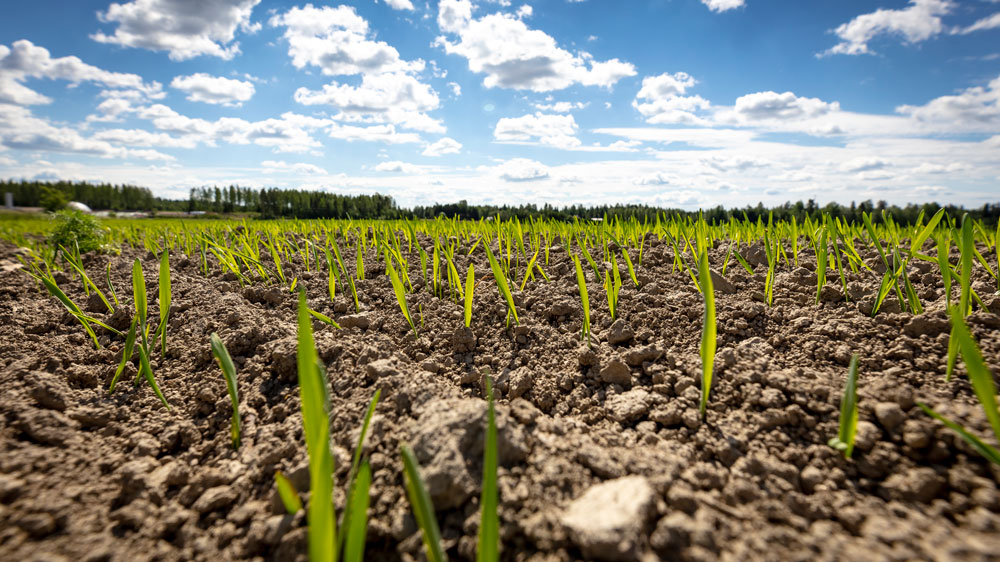Bioeconomy

In Finland, bioeconomy refers to an economy that relies on renewable, biological natural resources in a resource-wise manner to produce food, energy, products and services. The most important renewable, biological resources in Finland are the biomass, i.e. the organic matter, in the forests, soil, fields, water systems and the sea, and fresh water. These are used as raw materials and derivates. Ecosystem services are part of the bioeconomy. The bioeconomy can also include the development and production of technologies, applications and services based on the sustainable exploitation of natural resources.
The bioeconomy is an exceptionally important sector in Finland. Finland is a bioeconomy country. In 2023, it created a value added of EUR 29.3 billion per year, accounting for 12 % of the value added generated in the national economy.
Finland’s bioeconomy strategy’s “Sustainably towards higher value added” (updated in 2022) main objective is to increase the value added by the bioeconomy. The objective of the strategy is to accelerate the annual growth of the bioeconomy’s value added from 3% to 4%. The aim is to create economic growth and jobs based on sustainable solutions by producing the highest possible value added products and services.
Strategic focus areas of the bioeconomy strategy

Measures of the bioeconomy strategy
The aim of the Bioeconomy Strategy is to create economic growth and jobs based on sustainable solutions by producing products and services of the highest possible value added. The aim is also to increase the resource-efficient use and recycling of materials, to utilise side streams and to reduce dependence on non-renewable - especially fossil-based - raw materials.
Research plays a key role in identifying the growth and potential of the bioeconomy as well as in demonstrating new utilisation paths. Without the competence and experts created by national research, new knowledge on the bioeconomy generated globally could not be utilised.
The bioeconomy’s operating environment is determined by the national, EU-level and international operating environment and the related legal and policy environments. Bioeconomy investments require a fairly long payback period, and actors must be able to rely on the predictability of the legal and policy environment.
Bioresources refer to all bio-based materials such as plants, animals, microbes and bio-based process side streams. Sustainable biomass production based on Finland’s abundant renewable resources and water systems provides a solid basis for bioeconomy value chains, the most important of which are currently agriculture, the food system, forestry, forest-based products and materials, wood construction, wood products and bioenergy, as well as food, energy and other commodities produced from water.
The industrial structure of the bioeconomy is increasingly cross-sectoral. The introduction of solutions will require the creation of new types of value chains across traditional sectoral boundaries. However, the increase in value added will also be examined by sector, which will facilitate monitoring with existing instruments. Measures related to increasing value added have been examined in the following sectors: forest, food, energy, water and water biomass, bioeconomy services, textiles and clothing industry and chemical industry.
Non-paper on bioeconomy: Bioeconomy – next steps in the EU
Denmark, Estonia, Finland, France, Latvia, Lithuania, Portugal, Spain and Sweden have prepared a non-paper on bioeconomy in November 2024. It is a continuation of the non-paper on Key Actions for Bioeconomy in the EU, prepared in the spring of 2024.
The non-paper emphasizes the need to form a unified understanding of the bioeconomy and biotechnology within the EU. Bioeconomy uses various methods and processes. Competitive production of bio-based products requires that we use different technologies regardless of whether they are based on biotechnology, chemical processes, mechanical processes or thermal processes and different biomass sources.
The EU is amongst global leaders in bioeconomy and bio-based solutions. In order to maintain and strengthen our global leadership, we need a simplified regulatory framework, faster approval procedures and faster access to markets for bio-based products, as our competitors are advancing fast.
The bio-based sector across the EU faces critical challenges, which affect its potential for growth and competitiveness. To overcome challenges and to ensure the EU’s competitiveness in the bioeconomy, a “Sustainable European Bio-based Products Alliance” should be established. The Alliance would aim to stimulate the demand and market uptake of biobased products, renew the bioeconomy sector, improve the understanding of environmental performance of biobased products and enhance the legitimacy of different bio-based products as an alternative to fossil-based resources.
The Finnish Bioeconomy Strategy. Sustainably towards higher value added
Non-paper – Key Actions for Bioeconomy in the EU
Further information:
Ulla Palander
ulla.palander(at)gov.fi
